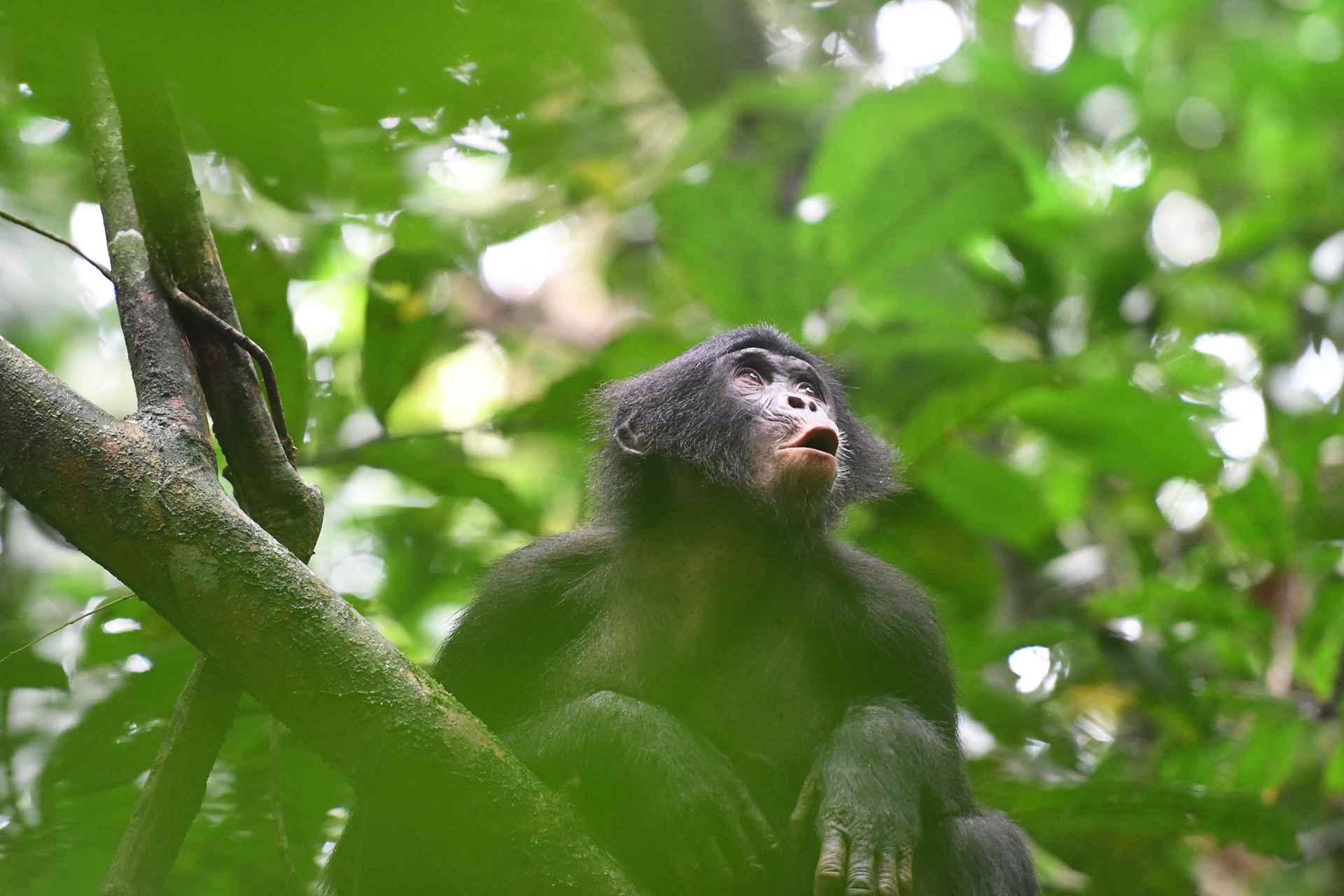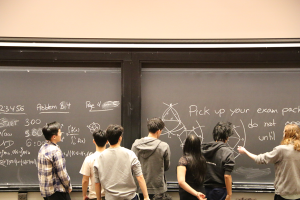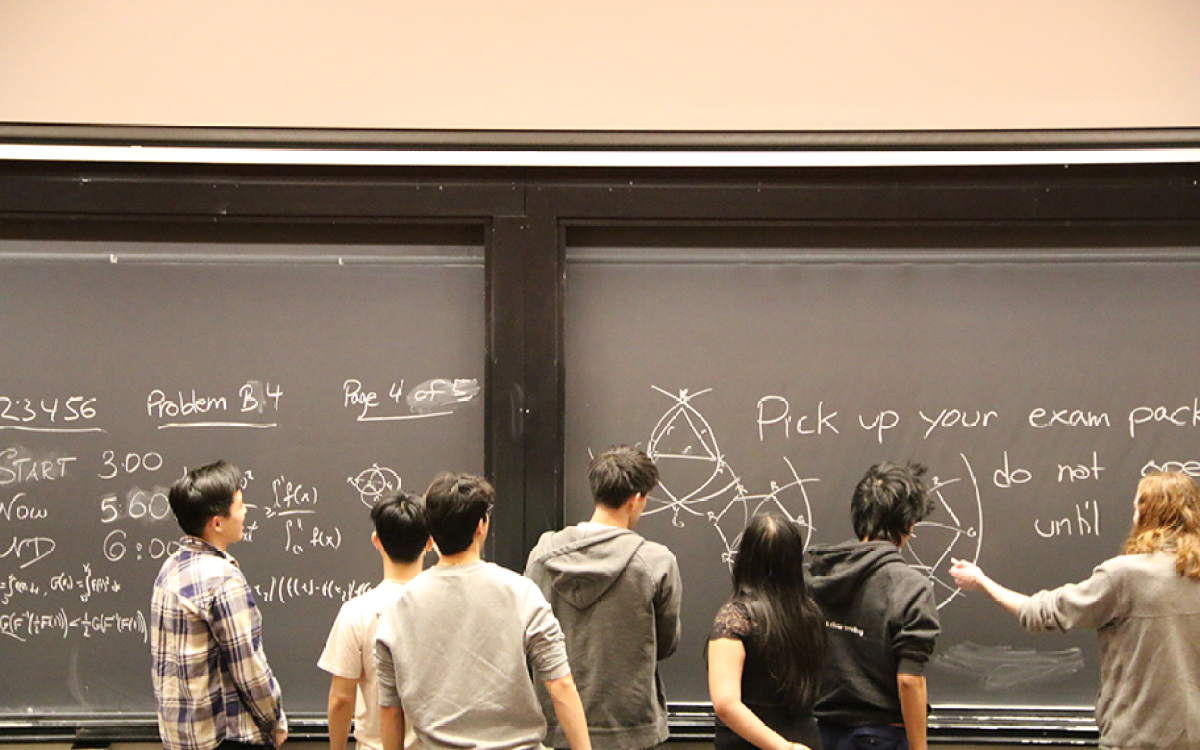
Mia, a young bonobo female, vocalizes in response to distant group members
Martin Surbeck/Kokolopori Bonobo Research Project
Turns out, bonobos ‘talk’ a lot like humans
Researchers compile dictionary of vocalizations suggesting the animals use equivalent of word compounds, phrasings to communicate complex social situations
How old is language? A new study from researchers at the University of Zurich and Harvard University reveals that bonobos, our closest living relatives alongside chimpanzees, use the equivalent of word compounds and phrasings, suggesting that the roots of language predate humans.
Communication has always been about more than just words, say the researchers, Assistant Professor Martin Surbeck of Harvard’s Department of Human Evolutionary Biology, and Professor Simon William Townsend and postdoc Melissa Berthet, both at the University of Zurich. The way we pair words to make phrases and sentences and then link these parts into phrases and sentences defines language, and our ability to communicate with each other.
This capability — known as “compositionality” — lets us create new words and phrases. For example, a “bad dancer” is not necessarily “bad” in any absolute sense. That modifier links with “dancer” to create an easily understandable neologism. Such phrasings can help communicate complex social situations.
“There’s been a long-held evolutionary relationship between vocal complexity and social complexity,” said Townsend. Humans are proof of that. “Arguably humans have the most complex social organization, and we also have the most complex communication system with the most complex forms of ‘combinator’ reality.”
‘A complex communication system’
The study details the researchers’ observations of the vocal behavior of wild bonobos, a key species for reconstructing human evolution, in the Kokolopori reserve in the Democratic Republic of Congo. Using novel methods borrowed from human linguistics, the team demonstrated for the first time that bonobo vocal communication also relies extensively on compositionality.
Like humans, bonobos have complex social bonds. For example, their social group sometimes breaks off into smaller groups before coming together again. “The social organization is perhaps possible because of this more sophisticated communication,” said Berthet, lead author of the study.
The data collection, done over eight months, was painstaking. Researchers began with a list of roughly 300 contextual features to check off when a bonobo made a sound classified as a peep, yelp, or whistle, and “what they were doing or what was happening.” These assumed that a call could give an order — such as, “Run!” — announce an upcoming action (“I will travel”), express an interior state (“I am afraid”), or refer to an external event (“There is a predator”). The team recorded what happened for two minutes after each vocalization to see how that vocalization influenced the group.
Not only did various vocalizations link to various acts or occurrences, but strings of vocalizations revealed their own meanings, allowing the team to create “a dictionary of sorts,” said Berthet. This dictionary revealed how many of the call combinations had the compositionality recognized from human languages. “This dictionary represents an important step in understanding animal communication, as it is the first time researchers have systematically determined the meaning of all the calls of an animal,” Berthet wrote.

Olive, a first time bonobo mother, vocalizing toward distant group members.
Lukas Bierhoff/Kokolopori Bonobo Research Project
“The beauty of this approach is that all of a sudden we have something that allows us to quantify these aspects of the vocal repertoire in all different types of species,” said Surbeck. “It opens a new understanding into animal communication.”
Such structured language is not unique to humans and bonobos: Similar combinations have been observed in chimpanzees. However, that research has tended to focus on single-call combinations, while this new study looked at an entire vocal repertoire.
“It does seem to be the case that at least in chimpanzees and now bonobos, these species that are characterized by this quite complex social system and long-term social bonds between individuals, that you do start to see levels of combinatorial complexity that you might not see in species with less complex social systems,” said Townsend. This suggests that species “evolve a complex communication system so that you can keep the social bonds and the social relationships going at a distance.”
Because humans and bonobos share a common ancestor from approximately 7 million to 13 million years ago, said Surbeck, they share many traits by descent. “It appears that compositionality is likely one of them.”





